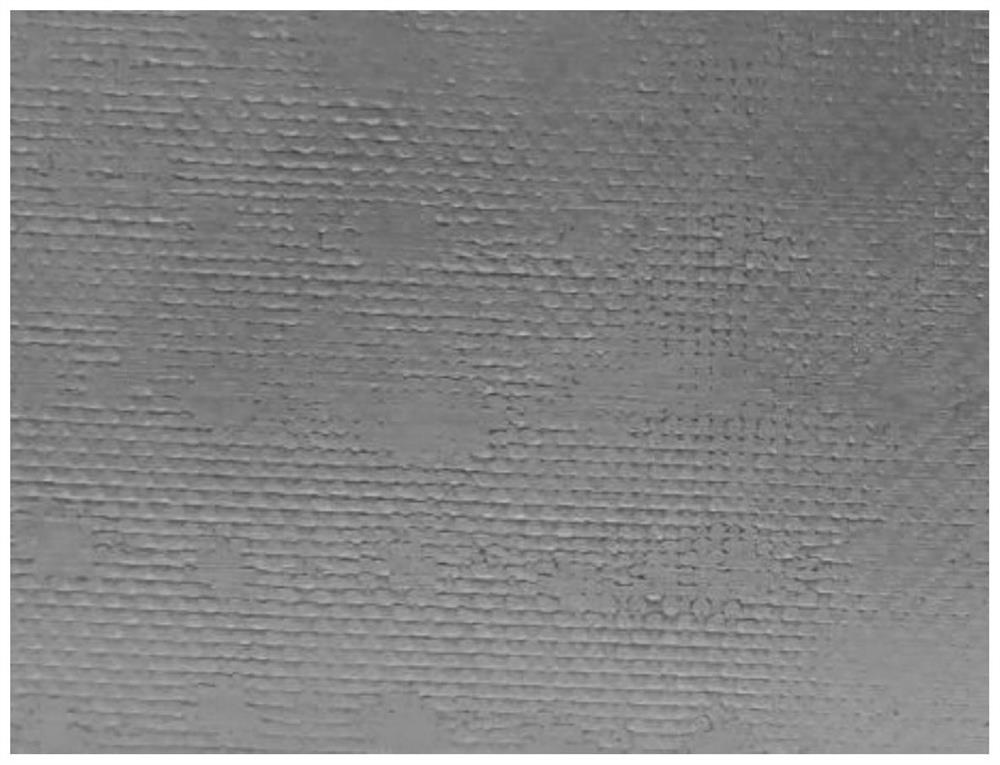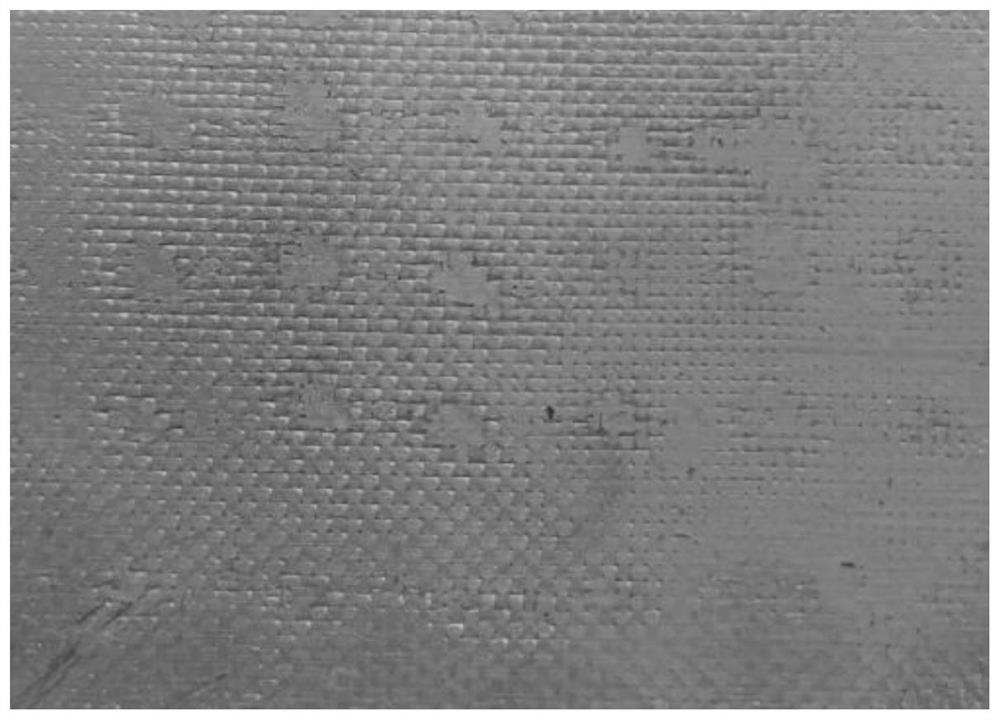Ceramic matrix composite satellite lightweight structural member surface flatness treatment method and structural member
A treatment method and a technology for structural parts, which are applied in the direction of pretreatment surface, device for coating liquid on the surface, coating, etc., can solve problems such as unsatisfactory parallelism, increased processing difficulty, and high hardness of silicon carbide materials, and achieve reduction Difficulty of machining, improvement of machining accuracy, uniform appearance and color
- Summary
- Abstract
- Description
- Claims
- Application Information
AI Technical Summary
Problems solved by technology
Method used
Image
Examples
Embodiment 1
[0045] This embodiment is the processing of the surface flatness of the front lens tube of the optical remote sensing satellite, and the specific steps are as follows:
[0046] 1) Machining the surface of the front lens barrel that has been deposited after assembly to initially improve the flatness of the product surface, that is, using a diamond tool to grind the surface of the front lens barrel to reduce the surface flatness error to about 0.1mm, The ground surface as figure 1 shown. Due to the high hardness of the product material, machining is difficult, so the surface flatness error of the machined product does not meet the product precision requirements.
[0047] 2) Clean the surface of the front lens barrel, wash and dry it.
[0048] 3) Take epoxy resin glue and diluent, mix according to the mass ratio of 4:1, and stir until uniform without air bubbles to obtain glue, and the diluent is industrial ethanol.
[0049] 4) Add zirconium carbide powder to the glue, and sti...
Embodiment 2
[0057] This embodiment is the processing of the surface flatness of the front lens tube of the optical remote sensing satellite, and the specific steps are as follows:
[0058] 1) Machining the surface of the front lens barrel that has been deposited after assembly to initially improve the flatness of the product surface, that is, using a diamond tool to grind the surface of the front lens barrel to reduce the surface flatness error to about 0.1mm, The ground surface as image 3 shown. Due to the high hardness of the product material, machining is difficult, so the surface flatness error of the machined product does not meet the product precision requirements.
[0059] 2) Clean the surface of the front lens barrel, wash and dry it.
[0060] 3) Take epoxy resin glue and diluent, mix according to the mass ratio of 5:1, and stir until uniform without air bubbles to obtain glue, and the diluent is industrial ethanol.
[0061] 4) Add zirconium carbide powder to the glue, and sti...
Embodiment 3
[0069] This embodiment is the processing of the surface flatness of the front lens tube of the optical remote sensing satellite, and the specific steps are as follows:
[0070] 1) Machining the surface of the front lens barrel that has been deposited after assembly to initially improve the flatness of the product surface, that is, using a diamond tool to grind the surface of the front lens barrel to reduce the surface flatness error to about 0.1mm, The ground surface as Figure 5 shown. Due to the high hardness of the product material, machining is difficult, so the surface flatness error of the machined product does not meet the product precision requirements.
[0071] 2) Clean the surface of the front lens barrel, wash and dry it.
[0072] 3) Take epoxy resin glue and diluent, mix according to the mass ratio of 6:1, and stir until uniform without air bubbles to obtain glue, and the diluent is industrial ethanol.
[0073] 4) Add zirconium carbide powder to the glue, and st...
PUM
| Property | Measurement | Unit |
|---|---|---|
| hardness | aaaaa | aaaaa |
| thickness | aaaaa | aaaaa |
| thickness | aaaaa | aaaaa |
Abstract
Description
Claims
Application Information
 Login to View More
Login to View More - R&D
- Intellectual Property
- Life Sciences
- Materials
- Tech Scout
- Unparalleled Data Quality
- Higher Quality Content
- 60% Fewer Hallucinations
Browse by: Latest US Patents, China's latest patents, Technical Efficacy Thesaurus, Application Domain, Technology Topic, Popular Technical Reports.
© 2025 PatSnap. All rights reserved.Legal|Privacy policy|Modern Slavery Act Transparency Statement|Sitemap|About US| Contact US: help@patsnap.com



